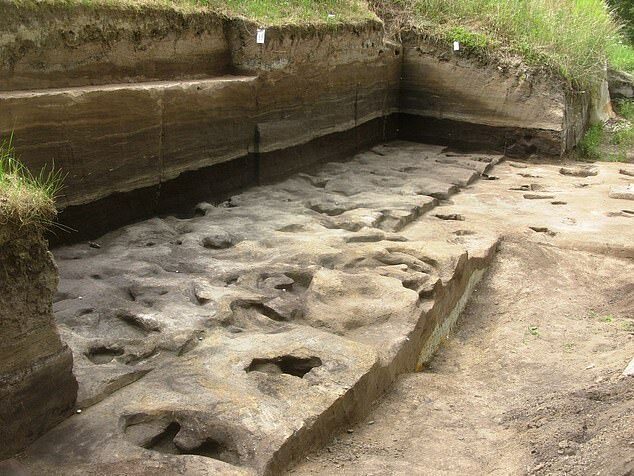
The perfectly preserved prints of a small family of 'Heidelberg people,' a species of human long since extinct, were uncovered in Germany.
This subspecies of archaic humans, formally known as Homo heidelbergensis, were the first to build homes and hunt large animals but disappeared from the Earth about 28,000 years ago - and experts say it was because of climate change.
The traces were discovered in the Paleolithic site complex of Schöningen in Lower Saxony, along with ancient animal imprints, including the first evidence of elephants in the region.
The discovery was made by scientists with the University of Tübingen (SHEP), who pieced together the ancient seen found at the site.
'In an open birch and pine forest overgrown with grass, there is a lake a few kilometers long and a few hundred meters wide. Herds of elephants, rhinos and even-toed ungulates come to its muddy shores to drink and bathe, the team shared in an announcement.
'In the middle of this scenery stands a nuclear family of the 'Heidelberg people.'
The scientists assigned two of the three human traces in Schöningen to young individuals who used the lake and its resources in a small mixed-age group.
The study's first author Dr Flavio Altamura said: 'Depending on the season, plants, fruits, leaves, shoots and mushrooms were available around the lake.
'Our finds confirm that the extinct human species lived on the shores of lakes or rivers with shallow water.
'This is also known from other sites with Lower and Middle Pleistocene hominin footprints.
'Due to the footprints of children and young people, it is more of a family outing than a group of adult hunters.'
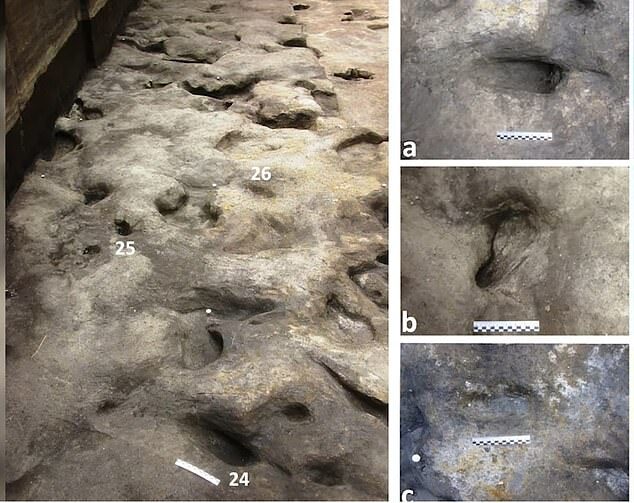
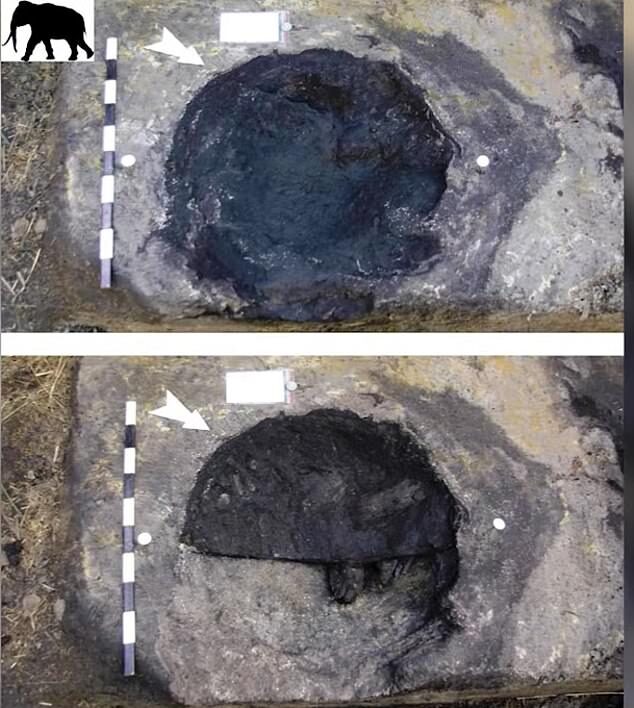
D Jordi Serangeli, head of the excavation in Schöningen, said: 'The elephant tracks we discovered in Schöningen reach a remarkable length of 55 centimeters.
'In some cases, we also found wood fragments in the ruts that the animals had pressed into the ground, which was soft at the time.
'One trace also comes from a rhino - Stephanorhinus kirchbergensis or Stephanorhinus hemitoechus - and is the first footprint of this species from the Pleistocene that was found in Europe.'
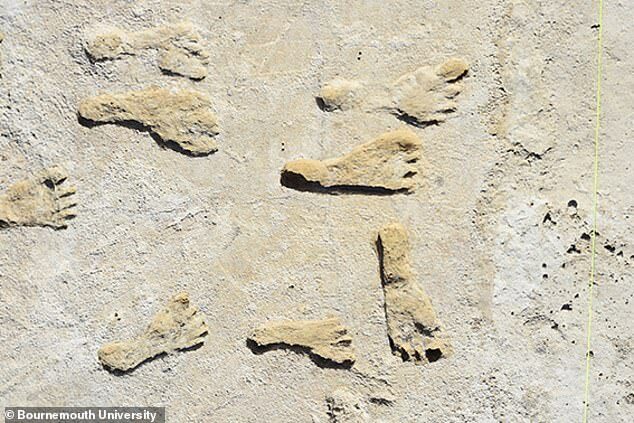
In 2021, scientists uncovered a set of 23,000-year-old human footprints discovered in New Mexico as the earliest evidence of human activity in the Americas, 10,000 years earlier than previously believed.
Comment: A recent DNA study suggests a migration event from China into the Americas up to 26,000 years ago: Evidence of ice age human migrations from China to the Americas and Japan
British and American archaeologists uncovered the prints in soft mud adjoining Alkali Flat, a dry lakebed at White Sands National Park in southern New Mexico.
Using radiocarbon dating of seed layers above and below the tracks, experts from the U.S. Geological Survey dated the footprints as having been made over at least 2,000 years
The oldest tracks date from around 23,000 years ago, corresponding to the Last Glacial Maximum, when ice sheets covered much of North America and sea levels were about 400 feet lower than today.
For decades it's been generally held that homo sapiens first entered North America between 13,000 and 16,000 years ago — after the melting of the North American ice sheets opened up migration routes and much later than study co-author Sally Reynolds and her colleagues suggest.
Few archaeologists have claimed reliable evidence for human habitation older than about 16,000 years.
Additional radiocarbon dates from samples of sediments, animal bones, and charcoal start even earlier — approximately 33,000 years ago — but some critics questioned whether humans actually made the stone samples.
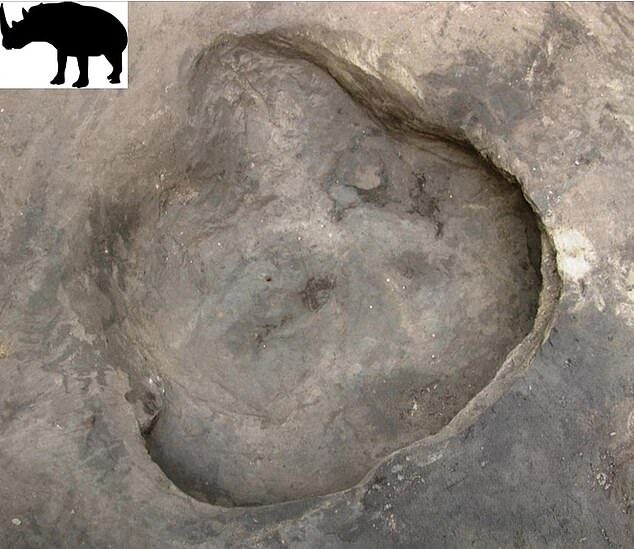



Joking aside, what utter BOLLOCKS.